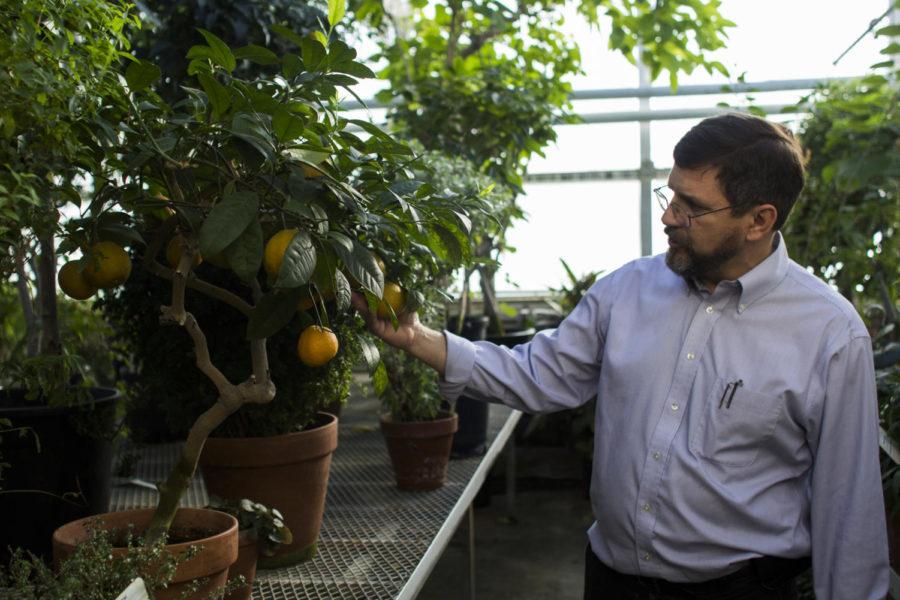Bessey Greenhouse home to hundreds of exotic plants
January 20, 2015
Pressing the button with the letter ‘R,’ in the elevator in Bessey Hall will take passengers to the roof, where they can escape to a tropical rain forest of sorts. It is home to banana plants, cacao trees and coffea plants.
Stephen Mahoney, the greenhouse manager, said the greenhouse was built in 1968 to house the botany, forestry and plant pathology departments —they have since been changed.
Mahoney oversees the maintenance issues and takes care of the purchasing needs such as fertilizer, insecticides, pots and containers. He also supervises five to six undergraduates in housekeeping and plant care.
“Plant care would include watering, fertilizing, repotting, trimming, transplanting seedlings and things of that nature,” Mahoney said.
The greenhouse houses about 600 different plants from all over the world and from all sorts of different climates in 12,500 square feet of floor space. There are desert plants, plants from the tropics and plants from Central America, South America, Africa and Asia.
“Former professor Richard Pohl was instrumental in collecting plant material from around the world,” Mahoney said, “He would slip some plant material in from overseas a little under the radar.”
Maria McEnany, a December 2014 graduate, worked in the greenhouse for two and a half years. She majored in agricultural studies with a minor in agronomy.
She heard about the opportunity from her sister’s friend who was graduating at the time she was starting school. She thought it would be a great opportunity to work with plants.
While doing housekeeping and taking care of the plants, she learned scientific names along the way as well as seeing how everyday fruits grew.
“With bananas, I had never seen them up close,” McEnany said. Her experience with the greenhouse introduced her to growing plants in an indoor setting that would later help in her current job at Stine Seed Company.
Robert Wallace, associate professor in the ecology, evolution and organismal biology department, has been working with the greenhouse and showing off the space to students for almost 25 years.
“Having a live plant showing the structures of the plant to a student that they can see in three dimensions is very valuable,” Wallace said.
Most of the time, people only see the product of plants — chocolate, bananas or pomegranates. Seeing the way they are grown and then harvested is different than expected.
“Banana is not really even a tree — bananas don’t even produce wood,” Wallace said, “The fruits actually mature upward, as in the supermarket you would actually think they hang down.”
While bananas are considered berries, chocolate comes from the seeds of the fruit produced on the cacao tree. The fruit is cracked open lengthwise and reveals the white fleshy covered seeds.
Wallace said people eat the juice that comes from the sweet and spongy aril that surrounds the seeds of pomegranates. Pomegranates are harvested before they mature so the wall of the fruit stays intact.
Wallace said there’s no doubt that seeing the live plant and all the different structures of plants helps students to learn about them.
The greenhouse is opened to the public 8 a.m to 4 p.m. Monday-Thursday and 8 a.m. to 2 p.m on Fridays.







